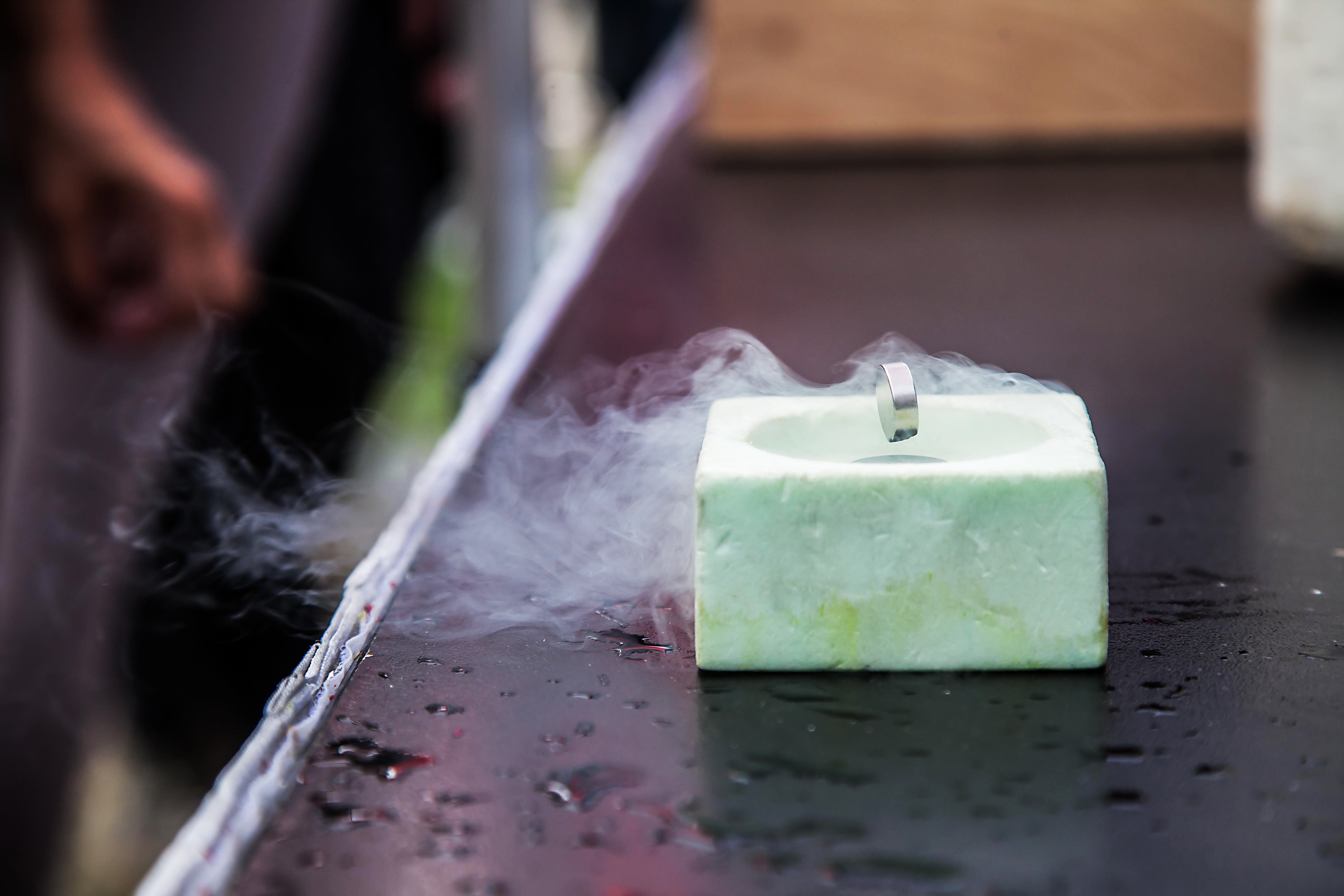
If rumor has wings, extraordinary scientific claims have a jet engine. Within hours of appearing on the preprint server arXiv.org, two papers by a team of scientists in South Korea generated enormous viral buzz. The researchers’ extraordinary claim is that they have discovered a room-temperature ambient-pressure superconductor, a material that can conduct electricity perfectly under everyday conditions.
A genuine ambient-condition superconductor is often touted for its potential to transform many technologies. It could enable a perfectly efficient power grid, levitating trains, commercially viable fusion reactors—the typical list goes on. The authors wrote that their discovery “will be a brand-new historical event that opens a new era for humankind.” But their experiment has yet to be properly scrutinized by the scientific community, and the quest for breakthrough superconductors has a long history of big claims that end up falling flat.
What’s superconductivity anyway?
When electrons flow through a standard conductive material, such as an aluminum wire, they act something like bumper cars, bouncing off atoms. All this bouncing creates resistance, reducing the electric current. But if that aluminum wire is cooled down to about one kelvin above absolute zero (–459 degrees Fahrenheit), something bizarre happens: the rules of traffic change so that electrons join together into pairs that glide frictionlessly among the aluminum atoms with zero resistance.
In 1987 researchers discovered the first “high-temperature” superconductors—materials that only needed to be cooled down to 77 kelvins (–321 degrees F), a temperature easily reachable via cheap and plentiful liquid nitrogen. These materials were literally and figuratively electrifying, sparking a jolt of enthusiasm among scientists and the public about the possibilities of warmer superconductivity. But much of the enthusiasm faded as advances slowed, and “high-temperature” superconductors stayed stuck at cold temperatures and remained impractically brittle.
During the past decade, researchers have pursued an interesting alternative: They discovered hydrogen-based compounds that are superconductors at relatively warm temperatures—but only while squeezed to pressures greater than one million atmospheres. And maintaining such high pressures is even more impractical than sustaining superlow temperatures.
What are the latest claims?
In their new preprint papers, the researchers say that LK-99, a compound of lead, copper, phosphorus and oxygen, is a superconductor at temperatures above 400 kelvins (260 degrees F) and ambient pressure. They also include a detailed recipe for making raisin-sized pellets of the compound, which requires mixing precise ratios of the powdered ingredients and then baking the mixture at high temperatures.
The authors also report performing tests of LK-99 and say they found the electrical resistivity dropping sharply around 378 kelvins (220 degrees F) and then reaching nearly zero around 333 kelvins (140 degrees F). Although zero electrical resistance is superconductivity’s hallmark, other tests are required to confirm a genuine superconductor. One such test is for the Meissner effect: because a superconductor expels magnetic fields, it repels other magnets, producing an iconic levitating effect. The South Korean researchers provided a video of what they say is LK-99 exhibiting the Meissner effect, but superconductors aren’t the only things that float above magnets—graphite, for example, also levitates.
Why are many scientists dubious?
Extraordinary claims that did not survive scrutiny have long plagued the field of superconductivity. In 1987, after a compound called YBCO was discovered to be a high-temperature superconductor, some researchers thought they saw hints of the compound developing superconductivity at room temperature—but those disappeared on closer inspection. The list of once-promising failures goes on and on: sandwiches of aluminum and carbon, copper chloride, ammonia-based compounds, and more all teased room-temperature superconductivity that ultimately proved illusory.
Ranga Dias, a physicist at the University of Rochester, has recently made multiple claims about room-temperature superconductors. But retractions and allegations of scientific misconduct have marred the credibility of those findings.
All of this means that strong skepticism is the default for new reports of room-temperature superconductivity—especially ones that are as yet largely unvetted by peer review. In this latest case, several details in the South Korean team’s preprint papers have raised concern. James Hamlin, a physicist at the University of Florida, points out oddities in a measurement of LK-99’s magnetic properties that gave him pause. “It doesn’t really look much like my experience of measuring” these properties, he says.
Doug Natelson, a physicist at Rice University, spontaneously spotted something even stranger while going over the preprints during an interview for this story. Both papers include a data plot detailing LK-99’s magnetic properties. Both plots were sourced from the same dataset and should thus be identical—but the plot in one paper has a y-axis with a scale that is about 7,000 times larger than the other. This kind of inconsistency does not prove anything, but at minimum, it suggests a worrisome shortfall in proofreading. Scientific American reached out to the South Korean team for comment but did not receive a response by the time of this story’s publication.
Getting definitive answers about what’s really happening in LK-99 demands patience, as eager independent teams attempt to replicate the South Korean team’s work. Because the recipe for LK-99’s synthesis is straightforward, results could come in the next few days or weeks. Natelson is interested, but he isn’t holding his breath. “It’s not rare for people to see weird stuff which in the end doesn’t pan out,” he says.
